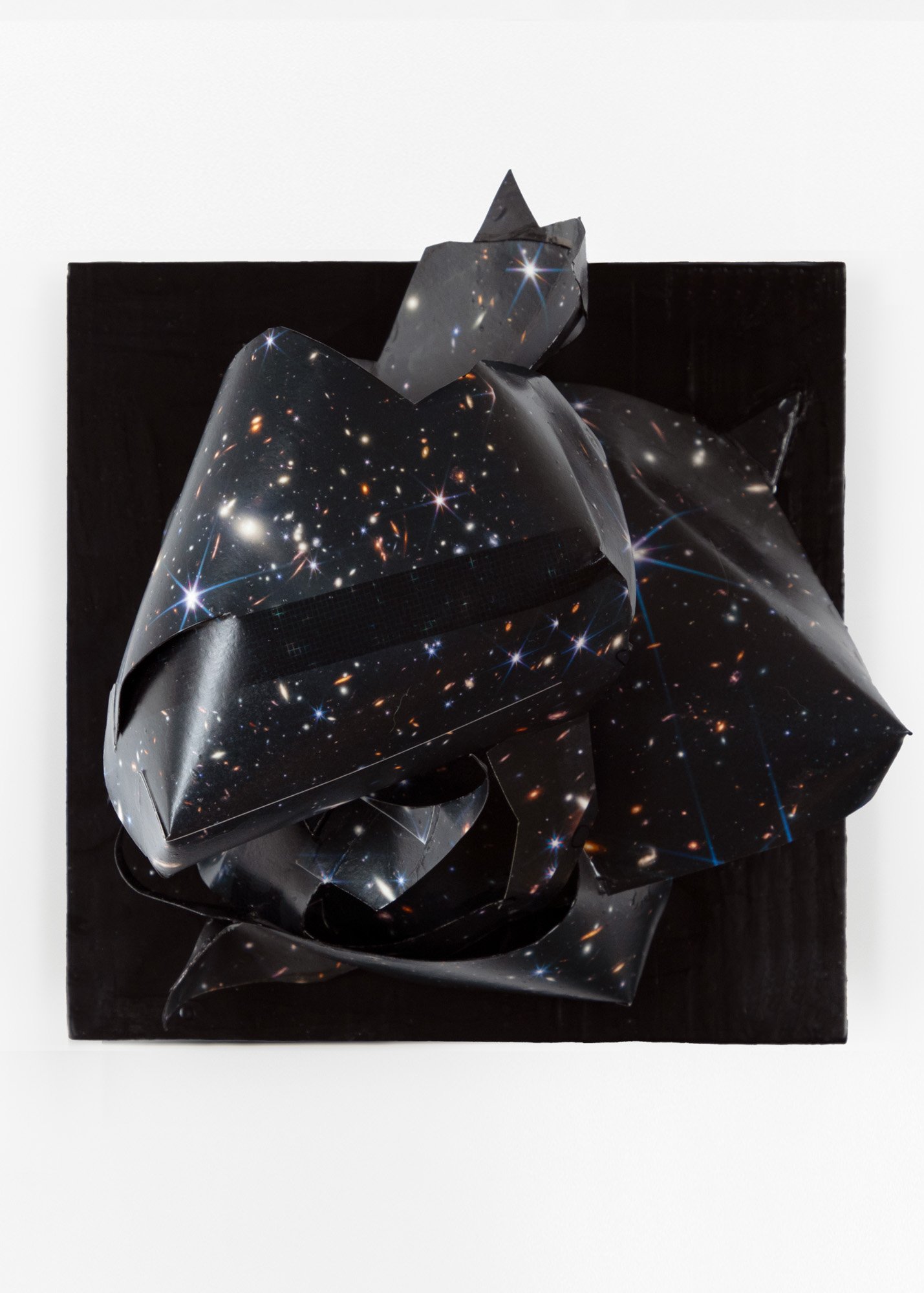“It is hard to imagine a society that would deny the body as we had denied the soul. This is, however, where we are headed.”
With Negative Horizon, my (in-process) series of photographic sculptures, I take the recent block-buster James Webb Telescope images from NASA as material to consider the possibilities and significance of physical, cultural and spiritual transformation.
The life cycle of a photographic image is unpredictable and often rapid. Pictures churn through our lives, shifting meanings and changing shape as they gallop through the apparati of the disembodied machine of late-stage capitalism. By pushing and folding NASA’s hyperreal images of impossibly deep time/space into object form, I slow the dromocratic churning and make space for encounters with something that exists here and now.
“The task of a philosophy of photography is to reflect upon [the] possibility of freedom - and thus its significance - in a world dominated by apparatuses; to reflect upon the way in which, despite everything, it is possible for human beings to give significance to their lives in the face of the chance necessity of death. Such a philosophy is necessary because it is the only form of revolution left open to us.”



